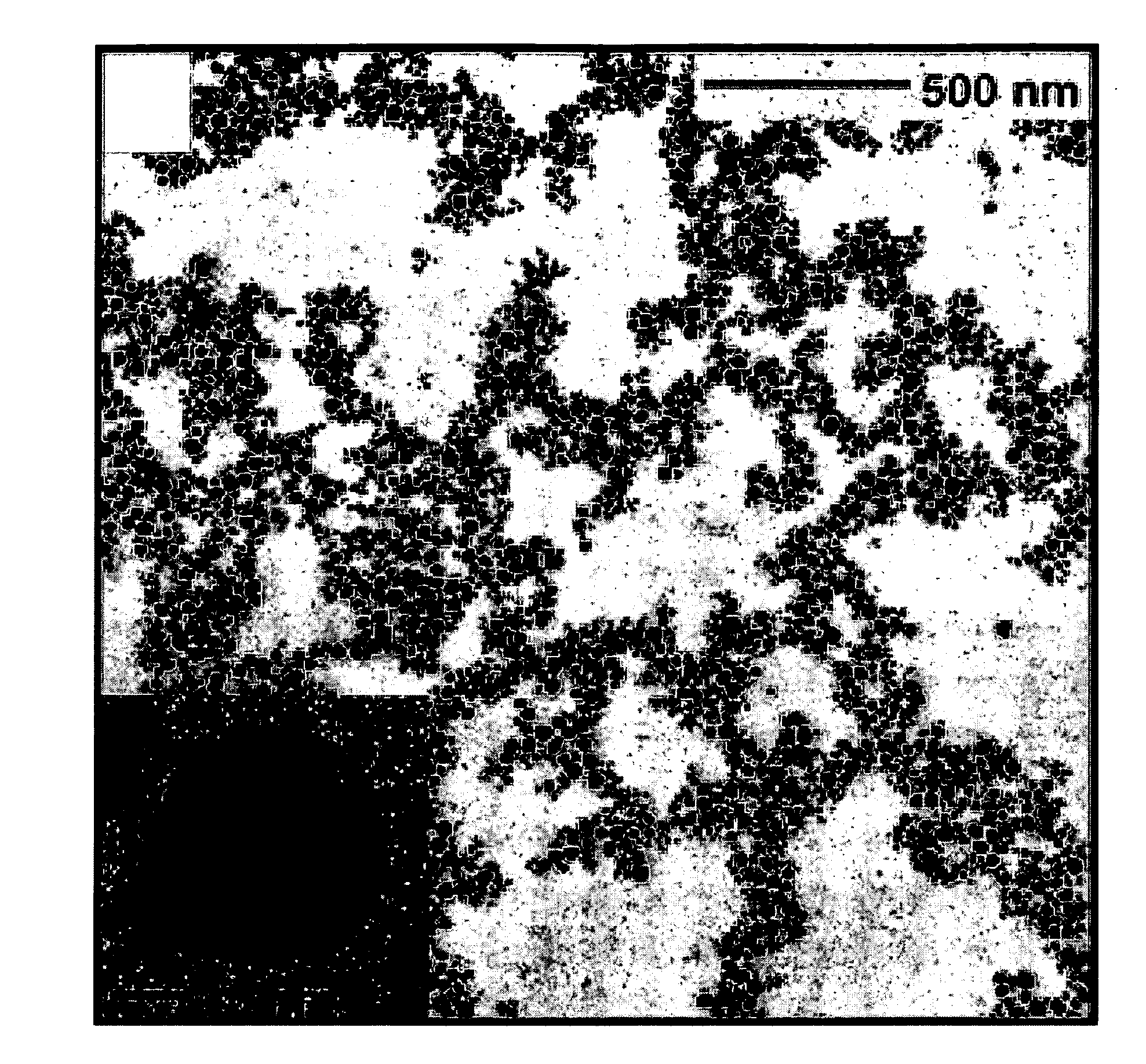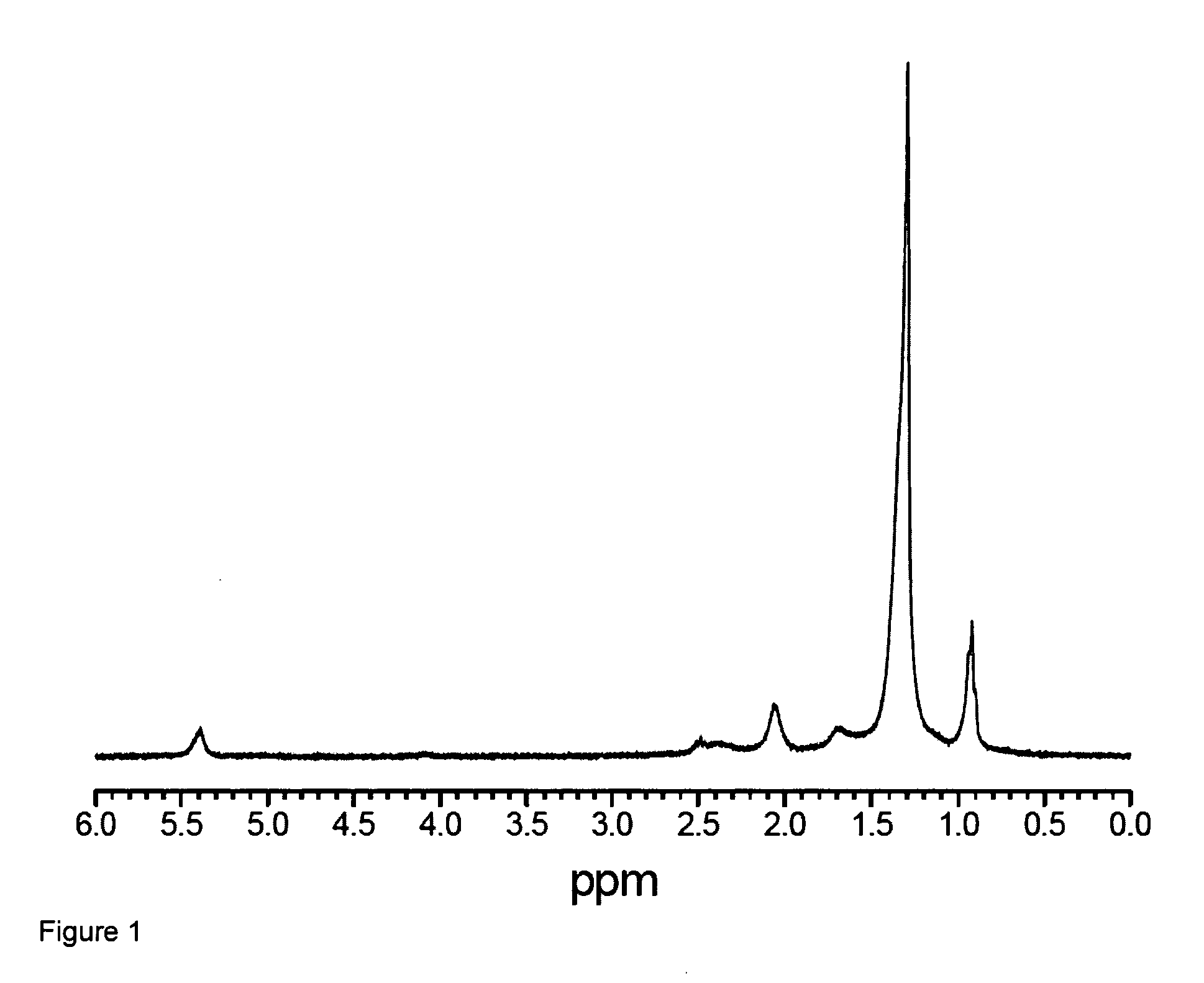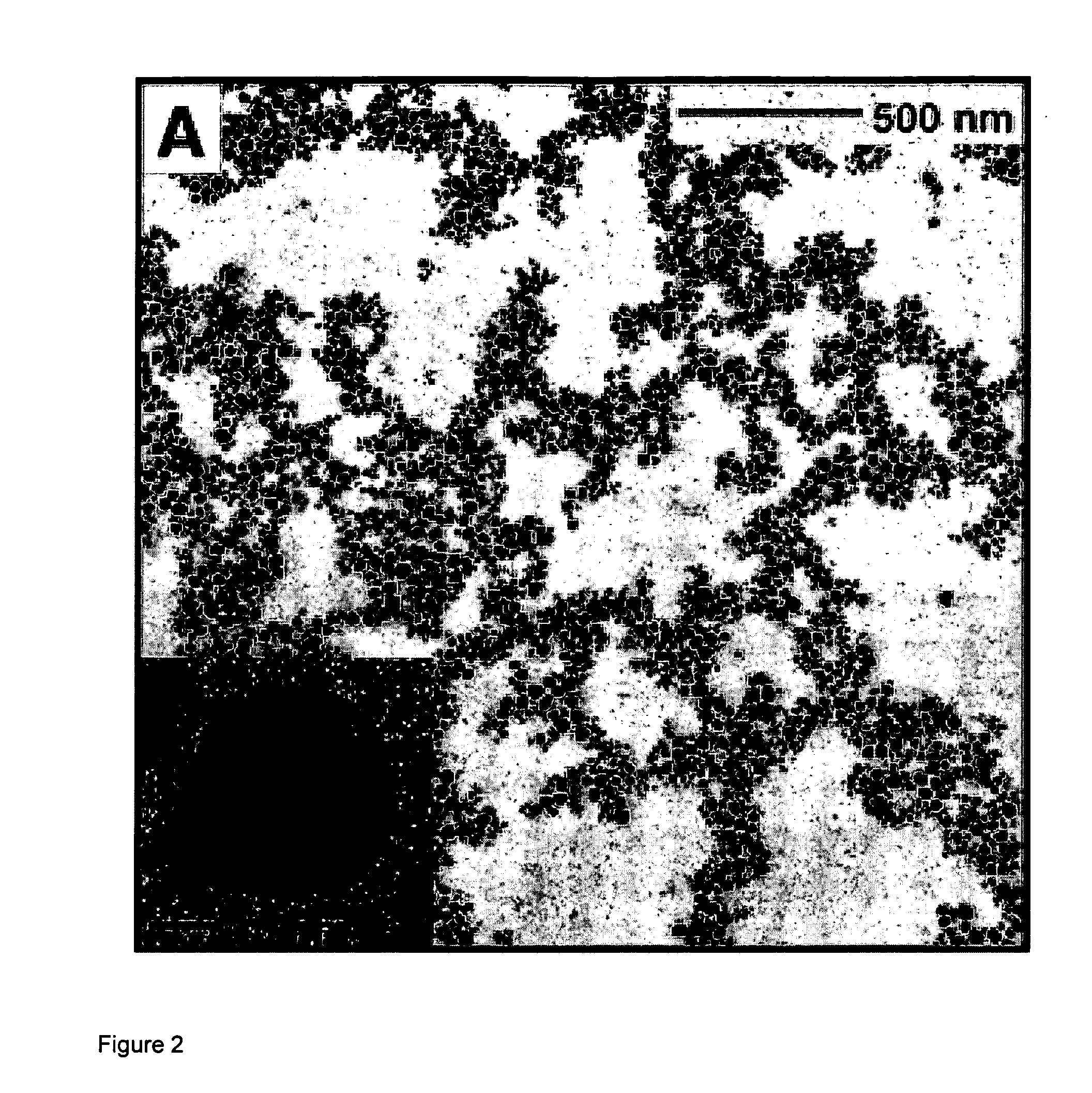Lanthanide-doped nayf4 nanocrystals, method of preparing and uses thereof
a technology of lanthanide and nanocrystals, applied in the field of lanthanidedoped nayf4 nanocrystals, method of preparation, can solve the problems of high background signal, dye or quantum dots, and difficulty in choosing an appropriate label
- Summary
- Abstract
- Description
- Claims
- Application Information
AI Technical Summary
Benefits of technology
Problems solved by technology
Method used
Image
Examples
example 1
[0093]The synthesis, characterization, and spectroscopy of upconverting lanthanide-doped NaYF4 nanocrystals (nanocrystals) is presented. Cubic NaYF4 nanocrystals were synthesized via a thermal decomposition reaction of trifluoroacetate precusors in a mixture of technical-grade chemicals; octadecene and the coordinating ligand oleic acid. In this method, the dissolved precursors are added slowly to the reaction solution through a stainless-steel canula, resulting in highly luminescent nanocrystals with an almost monodisperse particle size distribution.
[0094]The nanocrystals were characterized through the use of transmission electron microscopy (TEM), selected area electron diffraction (SAED), 1H NMR, powder X-ray diffraction (XRD), and high-resolution luminescence spectroscopy. The NaYF4 nanocrystals are capable of being dispersed in nonpolar organic solvents, thus forming colloidally stable solutions. The colloids of the Er3+, Yb3+- and Tm3+, Yb3+-doped nanocrystals exhibit green / re...
PUM
| Property | Measurement | Unit |
|---|---|---|
| temperature | aaaaa | aaaaa |
| temperature | aaaaa | aaaaa |
| temperature | aaaaa | aaaaa |
Abstract
Description
Claims
Application Information
 Login to View More
Login to View More - R&D
- Intellectual Property
- Life Sciences
- Materials
- Tech Scout
- Unparalleled Data Quality
- Higher Quality Content
- 60% Fewer Hallucinations
Browse by: Latest US Patents, China's latest patents, Technical Efficacy Thesaurus, Application Domain, Technology Topic, Popular Technical Reports.
© 2025 PatSnap. All rights reserved.Legal|Privacy policy|Modern Slavery Act Transparency Statement|Sitemap|About US| Contact US: help@patsnap.com



